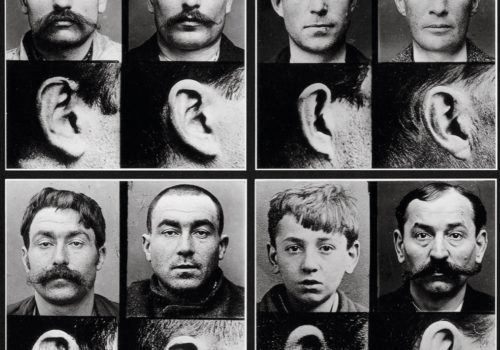Éditions Delpire just published a wonderful book dedicated to the career of the famous editor Robert Delpire and to his relationships with authors. We are presenting a selection of texts written by the publisher himself in which he shares a few anecdotes and secrets.
Having designed layouts for books and magazines, I craved, and found the opportunity, to hang on the wall some images I wanted to show. I understood very quickly that on the vertical plane images say something else than they did on the horizontal plane. That it is naïve to believe that a sequence that is well balanced on paper can be transposed onto the wall of a gallery or a museum. The necessary adaptation to the display format was not self-evident, and called for reflection. “If it’s not difficult, it’s no fun,” as my Latin teacher used to say. So I played with it, for fun. And I enjoyed it a lot: in the poorly equipped, poorly lit exhibition rooms that used to be common a few decades ago.
Exhausted by the endless obstacles, I dreamed of having a space of my own, something more functional. As luck would have it, I was passing one day by the storefront of a showroom for lease. I went in. And leased it. The place was ideal for what I wanted to do. It was the first Parisian gallery devoted to photography. I exhibited a lot of things: popular art objects, drawings, sculptures, but above all, photographs: Henri Cartier-Bresson and Guy Bourdin, Jacques-Henri Lartigue and Josef Koudelka, etc.; as well as illustrators whose talents, I felt, went underappreciated, such as André François, Raymond Savignac, and American artists, who were exhibiting for the first time in Europe. There was also the Push Pin design studio, with Milton Glaser, Bob Blechman, Paul Davis. And, of course, Saul Steinberg, the absolute genius.
To satisfy the craving I mentioned earlier, the episode of the Centre national de la photographie (CNP) was a gift from heaven, or rather from Jack Lang, since it was thanks to him that the Centre took over the Palais de Tokyo with its 2,000 square meters of surface, where, during the time I served as its director, we mounted some 150 exhibitions. It had everything that was necessary and was perfectly adapted to presenting our monographic and thematic projects in all their variety and complexity. I can never say this enough: “Thank you, Jack Lang, for having raised a medium as rich and versatile as photography to its highest level.”
Although this was not the explicit purpose of the Palais de Tokyo, we would take advantage of the exceptional space at our disposal to host artists who were part of our world. We were thus able to offer André François, my brother in arms, a space worthy of his talent. There was also Charles Matton and Boris Zaborov, both invested in the photographic medium on which they drew for inspiration.
What is the relationship between a book and an exhibition? One may think it’s easy to transpose the arrangement of an exhibition from the synopsis made for the corresponding publication. Wrong. Interpreting photographs hanging on a wall is completely different from reading them as one turns the pages of a book. It’s a matter of perspective and the viewer’s position vis-à-vis what is displayed on the wall. But it also has to do with the fact that a photograph in a book is seen by the reader as a single image. In a museum or a gallery, the eye of the visitor wanders from one print to the next, often varying in size, and may approach them in an order different from the sequence assembled by the exhibition’s curator.
Of course, when I assumed the leadership of the Centre national de la photographie, I contributed something that had probably never existed before: not in that exact way and not in this type of a museum. Palais de Tokyo was a marvelous place. Here we had the largest space devoted to photography in Europe, perhaps even in the world. We really accomplished a lot. I’d like to think that, thanks to the Centre and, of course, to other people, including gallery owners, critics, and photographers, we furthered the cause of photography. Thanks to our efforts, photography has come to be considered as a form of art in its own right. Before the Centre had come into existence, it would have been unthinkable to have a major photography exhibition in a museum. Nowadays, however, no museum director in the world would turn it down. I think we really made a difference.
I never get tired of picking through photos, pairing them up, publishing them, hanging them up. But I like less talking about it, explaining it, and commenting on it. In the early days of Magnum Photos, Robert Capa, who spoke with friendly irony and tended to sound high and mighty, would often say to me, “Shut up, you’re too young. You’ll speak when you’re old enough.” It would appear I am still not old enough. I am retarded, that’s what I am.
Robert Delpire
Robert Delpire is an editor, artistic director, exhibition curator, and founder of the eponymous publishing house. He lives and works in Paris.
C’est de voir qu’il s’agit…
Published by Editions Delpire
€35
















